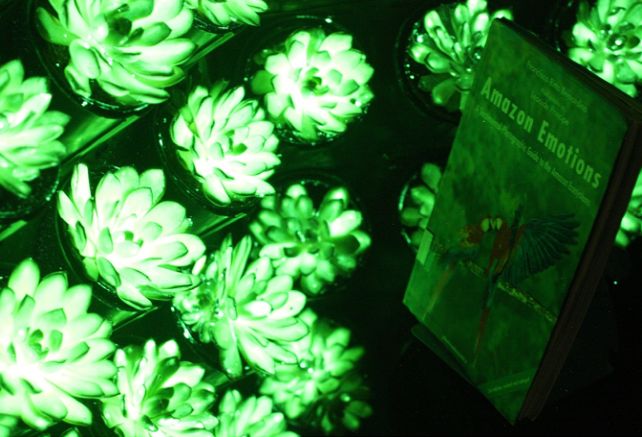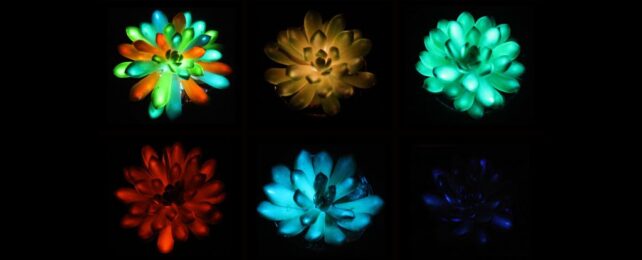If you've ever wanted to live your life adrift amid a sea of gently glowing succulents, that dream just got a tiny step closer.
A team of scientists at South China Agricultural University has managed to create succulents that glow in the dark through a process that can be recharged using sunlight. Moreover, they can glow in multiple different colors to form a rainbow of lights – even in the same succulent.
The glow doesn't last forever, and each leaf needs to be treated separately. But the first step of creating an injectable medium that makes the plant emit a gentle luminescence has been achieved.
Related: Scientists Engineer Gorgeous Glowing Plants That Shine Bright Their Entire Life Cycle
"Picture the world of Avatar, where glowing plants light up an entire ecosystem," says biologist Shuting Liu of South China Agricultural University.
"We wanted to make that vision possible using materials we already work with in the lab. Imagine glowing trees replacing streetlights."

Many of us surround ourselves with, and nurture, plant life. If that plant life were able to glow, like organisms such as fireflies and eldritch things deep in the ocean, it could provide a low-cost, solar-powered, and stunningly beautiful means of lighting our homes or gardens.
Scientists have experimented with various ways to do this, resulting in methods that are frustratingly complex and not exactly low cost.
Liu and her colleagues based their technique on afterglow phosphor particles, similar to the materials that go into glow-in-the-dark toys and stickers. This presented a few major challenges. Larger particles glow more strongly, but permeate the plant less effectively; and not all plants absorb and disseminate the particles well.

After experiments involving different plants, including golden pothos and bok choy, they found that the ideal particle size is 7 micrometers, about the same size as a human red blood cell. Contrary to their expectations, though, the densely tissued succulents produced the strongest, most even glow. The researchers thought plants with airier tissues would have been the best choice.
"It was really unexpected," Liu says. "The particles diffused in just seconds, and the entire succulent leaf glowed."

The next step is to work on improving the longevity of the plants' glow. After being recharged, each plant glows for about two hours – similar to glowing toys or stickers – and it gets weaker over time.
The initial experiments, though, show promise for a glowing rainbow of red, green, violet, and blue succulent plants that, in sufficient quantities, could provide enough light to read by.
"I just find it incredible that an entirely human-made, micro-scale material can come together so seamlessly with the natural structure of a plant," says Liu. "The way they integrate is almost magical. It creates a special kind of functionality."
The research has been published in Matter.
